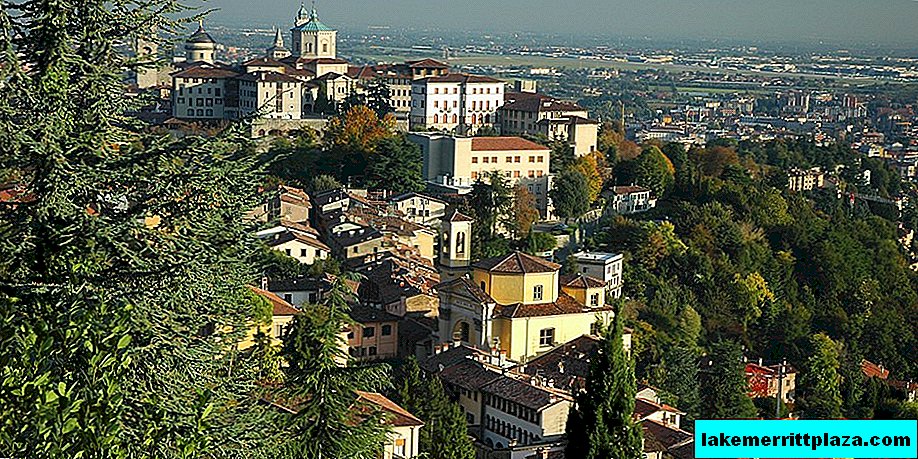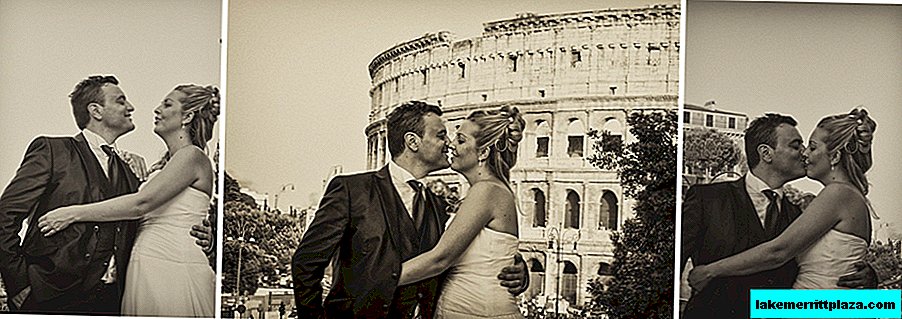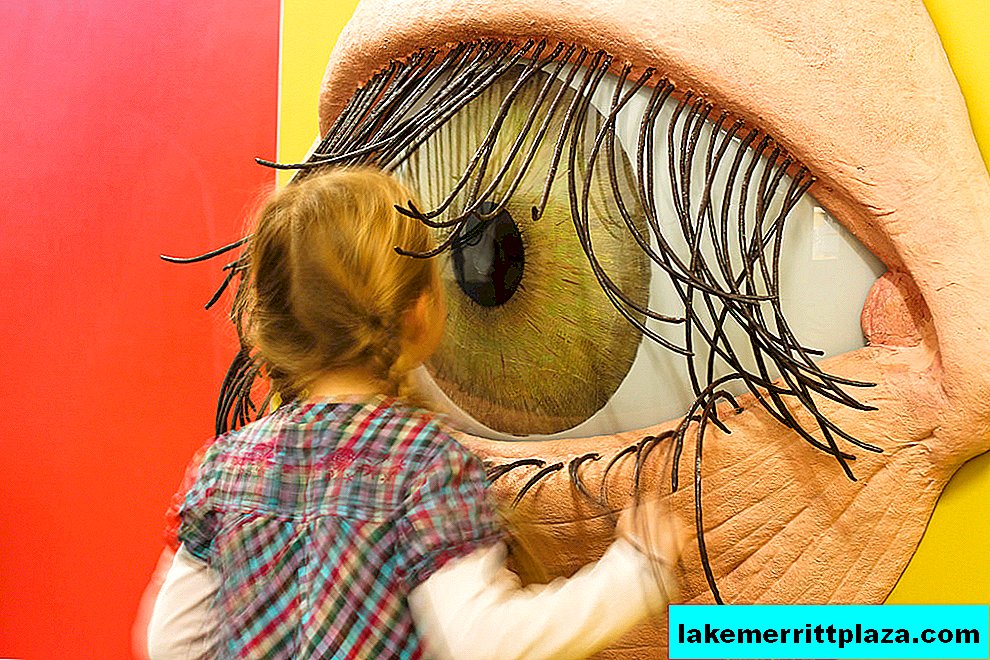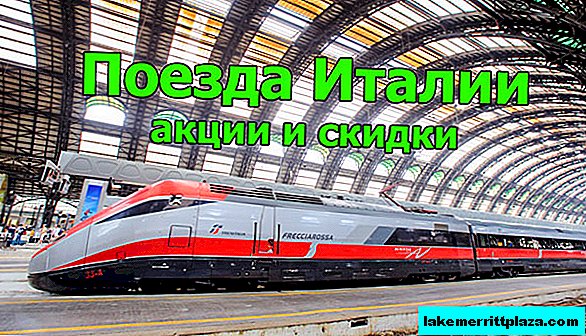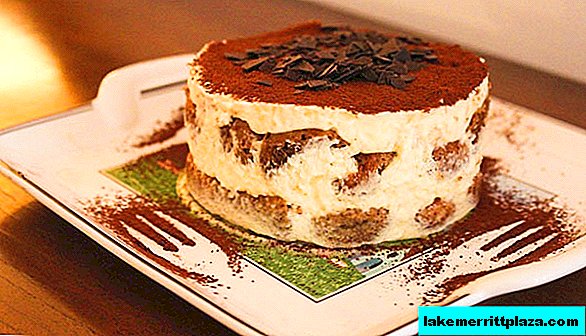Bolzano is a multinational city, bright and temperamental in Italian, neat and thorough in German. It attracts not only monuments of history and culture, holidays and festivals, but also magnificent mountain landscapes, lakes. Bolzano - gateway to the Dolomites.

Bolzano or German Bozen, photo by Neera
Bolzano (Italian: Bolzano; German: Bozen) is a small, cozy Italian town in a valley lost in the mountains, not far from the border with Austria and Switzerland. It is the capital of the autonomous North Italian province of Bolzano (Bolzano-Bozen - South Tyrol), which is part of the autonomous region of Trentino - Alto Adige / Südtirol. Official languages 2. Nearly 3/4 of the population speaks Italian; 1/4 - in German; even on the streets you can hear the Latin speech of the indigenous people. The town combines two national characters: it is bright and temperamental in Italian, neat and thorough in German.
When to go to Bolzano
Bolzano stands in the middle of the hollow, at the confluence of the rivers Talvera, Isarco and Adige. From all sides it is surrounded by hills, majestic ridges of the Dolomites. Due to the location at the bottom of the mountain natural "bowl", a special mountain microclimate is formed: humid, moderate, with an average annual temperature of + 11.6 ° C. The warmest month is July, with an average monthly temperature + 23 ° C. In summer, from May to August, the highest rainfall occurs. The driest and coldest is January (about + 1 ° C).
Legends
There are legends about the Dolomites. It is said that mythical creatures chose this beauty for life. Elves live here. At Rosengarten (in German, the Rose Garden), you can meet the gnomes and their king Laurin, who made the mountains turn pink in the sunset.
Sights
 Walther Square
Walther Square
 Cathedral of the Assumption of the Virgin Mary
Cathedral of the Assumption of the Virgin Mary
 Via della Mostra
Via della Mostra
 Silver street
Silver street
 Mercantile Palace
Mercantile Palace
 Portikov Street
Portikov Street
 Dei Bottai Street
Dei Bottai Street
 Monastery of the Order of the Franciscans
Monastery of the Order of the Franciscans
 Marecchio Castle
Marecchio Castle
 Archaeological Museum of South Tyrol
Archaeological Museum of South Tyrol
 Modern Art Museum
Modern Art Museum
 Muri Gris Abbey
Muri Gris Abbey
 Messner Mountain Museum
Messner Mountain Museum
 Flavon castle
Flavon castle
 Sant Antonio Castle
Sant Antonio Castle
 Cableway
Cableway
Walther Square
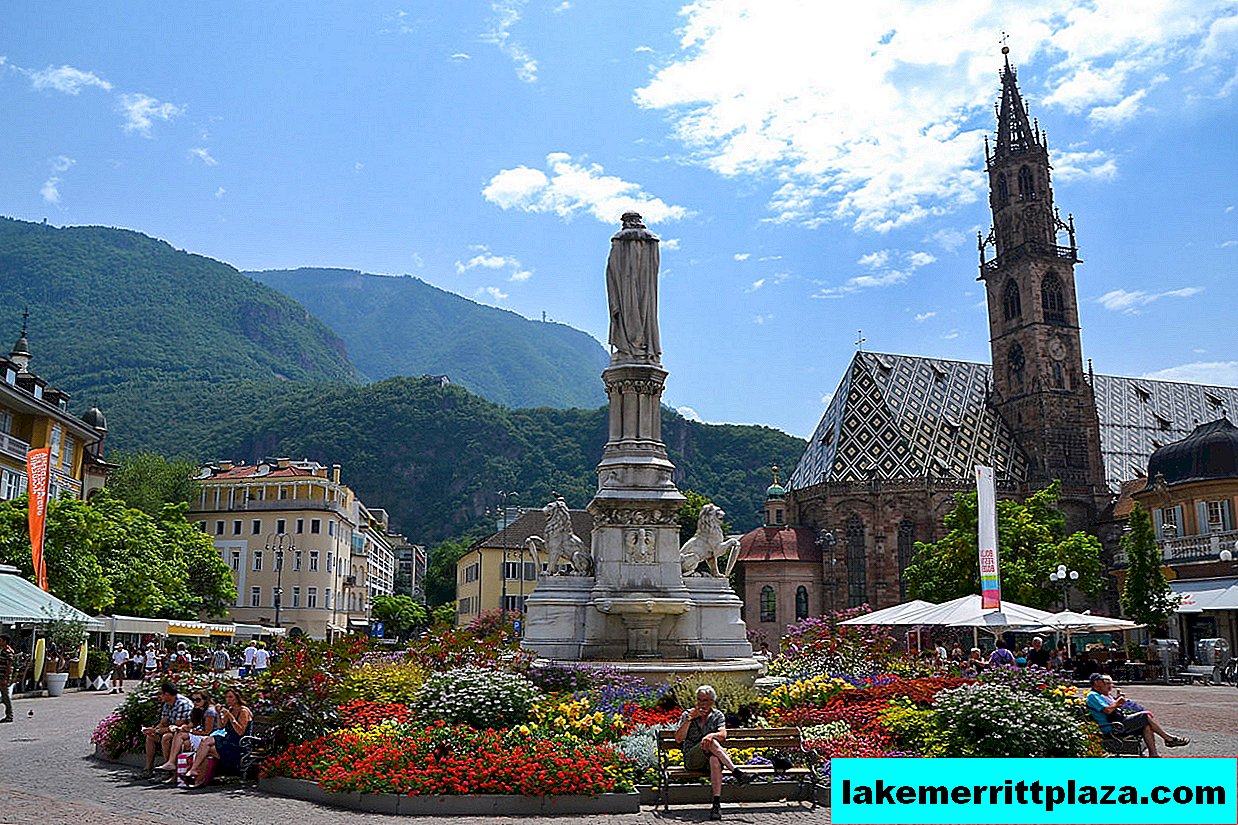
Walther Square with the Cathedral of the Assumption, photo by Eric Chumachenco
The city center, where the market works and festivities take place, is Walther Square (Italian: Piazza Walter; German: Waltherplatz). In the middle of the square there is a tall monument with the figure of a man in a raincoat. This is a monument to the national poet-minnesinger - Walter von Vogelweide (1889).
Greif Center, the luxury shopping mall, is located on Walther Square.
Cathedral of the Assumption of the Virgin Mary
The main building on the square is the Cathedral (Duomo di Bolzano), dedicated to the Assumption of the Virgin Mary (Santa Maria Assunta). It was founded in the 12th century. Two centuries later, the building was reconstructed in the Roman Gothic style. In 1519, a 65-meter square bell tower with late Gothic style was added. An authentic fresco (14th century) painted by a student of Giotto survived in its interior. A relic is stored in the chapel of the apse - the miraculous image of the Madonna of the Mammal.
Portikov Street

Porticov Street (Via dei Portici), photo by Magister_Ludi
One of the oldest and most beautiful streets of Bolzano is Porticov street (Via dei Portici). It starts from Piazza del Municipio, stretches for about 300 meters and ends at Piazza delle Erbe. On the facades of houses framing the street, authentic frescoes, wooden shutters, stucco moldings of Rococo have been preserved. Via dei Portici has the most popular shops. Until the 20th century, the City Municipality was located on Portikov Street.
Argentieri Street

Silver Street (Via Argentieri), photo by Brad Mohr
Along the medieval Silver Street (Via Argentieri), old mansions and palaces lined up. The first floors of the buildings are occupied by shops and taverns.

Palazzo Mercantile Palace, photo by weinstrasse.com
In the Palazzo Mercantile Palace (1635) on Arzhentieri Street, the Museum of Commerce (Museo mercantile) was opened, which tells the economic history of the city on the example of house documents, paintings and furniture of the XVII-XVIII centuries.
Dei Bottai Street

White Horse Tavern on Via dei Bottai, photo by Alfred Lex
Day Bottai Street - Gateway to the Old Town. In the Middle Ages, at the corner of Via dei Bottai and Via Andreas Hofer were the city gates of Wangen. Today, there are many artisan shops with forged signs of old masters on Day Bottai Street. Here are the tavern “White Horse” and “Eisenhat”, as well as the Museum of Nature of South Tyrol (Museo di scienze naturali dell'Alto Adige).
Via della Mostra

Via della Mostra, photo by Alfred Lex
Via della Mostra is one of the expensive streets of Bolzano. Already in the XVIII century, Via della Mostra was the most beautiful and elegant in the city, and many members of aristocratic families built their grandiose residences here. Today, some palaces are reconstructed into hotels.
Archaeological Museum of South Tyrol

South Tyrol Archaeological Museum (Museo archeologico dell'Alto Adige), photo by Hubert Berberich
The Archaeological Museum of South Tyrol (Museo archeologico dell'Alto Adige) illustrates the history of the region from the Paleolithic to the Carolingian era. The main exhibit is the Ötzi mummy, our distant ancestor frozen in the mountains 5,300 years ago, discovered in 1991 on the Similaun Glacier. Nearby is a realistic reconstruction of the image of the "Similaun man."
Address: Via Museo, 43; website: www.iceman.it.
Museum of Modern Art "Museon"

Museion, photo by Karlheinz Kellert
The Museum of Modern Art "Museon" (Museion - Museo d'arte moderna e contemporanea) was founded in 1985. A cubic building with a transparent facade stands on Piero Siena Square. Museion complex hosts exhibitions of contemporary art, international conferences.
Address: Piazza Piero Siena, 1; Website: www.museion.it. On Thursdays from 18:00 to 22:00 admission is free.
Monastery of the Order of the Franciscans

Monastery of the Order of the Franciscans (Convento dei Francescani), photo Alfred Lex
In the historical center stands a monastery of the Order of the Franciscans (Convento dei Francescani), surrounded by a wall, with an arcade cloister. The monastery was founded in 1221. Inside, original frescoes, a wooden polychrome altar have been preserved. Above the choirs are the stained-glass windows of Joseph Widmozer.
Muri Gris Abbey

Abbazia di Muri-Gries, photo by Skafa
In the old Gris district, on Piazza Gries, is the Benedictine Abbey of Muri-Gries (Abbazia di Muri-Gries) with the baroque church of St. Augustine (XVIII century). A 5-ton bell is installed on the belfry of the monastery. The oldest part of the complex is the count's castle, built in the XII century, later transferred to the monastery.
The cloister of the Romanesque tower has a museum of Christmas nativity scenes (Collezione di presepi del Convento Muri Gries). The oldest exhibit dates from around 1750.
Marecchio Castle

Mareccio Castle (Castel Mareccio), photo PryanksterDave
Near the historical center is the castle of Mareccio (Castel Mareccio) with the enchanting rose garden adjacent to it. The age of the castle tower dates from the XII century. The walls of the medieval building are surrounded by vineyards, the rooms are painted with frescoes. Today Marechchio serves as an expocenter, a concert complex.
Messner Mountain Museum

Messner Mountain Museum, photo by Hubert Berberich
On the southern outskirts is the castle of Firmian (Castel Firmiano) (X century) - a symbol of South Tyrol. Here is one of the sections of the Messner Mountain Museum, which was founded in 2006 by a climber who conquered the fourteen greatest peaks of the planet.
Address: Via Castel Firmiano, 53; Website: www.messner-mountain-museum.it.
Flavon castle

Castle Flavon (Castel Flavon), photo Giovanni Fabriani
Castle Flavon (Castel Flavon) was built in the XII century. Fragments of defensive walls and murals of the XVI century. on the walls can be seen today. In the fifteenth century, Flavon was reconstructed: halls and living quarters were added, a new wall was built. Today, Castel Flavon has a restaurant, and the halls are used for conferences and banquets.
Sant Antonio Castle

Castle of Sant Antoni (Castel Sant'Antonio), photo Cepaea
Castle Sant Antonio (Castel Sant'Antonio) was built in the XIII century. In the XIV-XVI centuries. it was reconstructed: living quarters, a church and a chapel were added. The last modification was carried out in the XX century by the Aufschneiter family, the current owners.
Funivia del renon

Rittner Seilbahn lift, sesquiotic photo
The cable car (steel. Funivia del Renon; German. Rittner Seilbahn) connects Bolzano with Soprabolzano (Soprabolzano - Upper Bolzano). Passengers cover a distance of 4.5 km in 12 minutes and rise to a height of 950 m. The views of the city and mountains along the way are breathtaking.
Upstairs next to the lift station is a small panoramic train station. The final stop Collalbo is only 7 km away, but the road is very scenic. From Collalbo you can go on foot to the earthen pyramids.
History paragraph

Contemporary Art Against the Background of Old Architecture, Photo by Massimo Albino
In the interfluve of Adige and Izarco, an ancient Roman military camp arose 15 years before the new era. In the V century, the territory was captured by the Ostrogoths, then the Lombards came. At the end of the 8th century, the warlike Charlemagne annexed the settlement to the Frankish state. In 1027, Bishop Trento received the county of Bozen as a gift from Emperor Conrad II. On the important trade route, uniting Germany and Italian territories, a large market emerged. Under the Habsburgs, Bozen received economic privileges; by the 16th century, he had become the political center of the county of Tyrol. After the capture of the Napoleonic army and the subsequent fall of Bonaparte, he went to the Austrian Empire. The city became part of Italy only after World War II.
Fun and Holidays

Flower market, photo bolzano-bozen.it
At the turn of April-May, the city is transforming: the three-day Flower Market, the Mercato dei Fiori holiday, opens. Walther Square blooms with a colorful carpet of indoor and garden plants, ornamental trees, herbs. City restaurants offer a themed floral menu.
In May, the city celebrates Speckfest Alto Adige - a festival of Tyrolean ham - Alto Adige bacon. Chefs come from all autonomy: master classes, tastings; tournament on the card game "Watten".
The Bolzano Music Festival is held annually in the summer. Orchestras perform at concert venues and city squares. Since 1949, an academic pianist competition dedicated to Ferruccio Busoni has been held as part of the event.
The Bolzano Danza Ballet Festival opens in mid-July.

At the pumpkin market, photo by Michele Bighignoli
In the fall, the pumpkin market begins its work .; everything around them turns yellow from them.
The Wine Route of the South Tyrol Wine Festival takes place every year. In Bolzano, wine and food producers meet, seminars and tastings are held.
The Christmas market begins in November. The city is lit up with lights, rows of trade festive pavilions are growing in the squares, solemn hymns are heard in the streets and in churches. Christmas markets are open until January 7th.
In February, the Ice Music Festival is held - the famous festival of "ice" music. On the stage, built of snow panels carved on local glaciers, artists play. All tools are also made of ice. A ten-day holiday is followed by curling competitions.
What and where to try

Spinach ravioli (schlutzkrapfen), photo omefrans
Italian dishes are offered at Laurin restaurant (a specialty - fish soup) and Alumix restaurant (a large selection of pasta and pizza, interesting salads and fresh seafood).
The Walthers' restaurant specializes in Austrian cuisine. He also has an excellent wine list.
The popular restaurants include Stadt Cafe Citta and Vogele.
Forsterbrau Central Bolzano Pub serves dozens of varieties of foamy drinks. Nearby is a brewery.
Grilled vegetables and fish, traditional Italian pizza, light snacks and various sandwiches can be enjoyed at the Imbiss Kampill Bistro.
The culinary traditions of Italy and Austria intertwined in the cuisine of Bolzano. Therefore, it is worth a try: ravioli alla pustarese or with spinach; knödel and dumplings; polenta with venison or venison goulash; pork tenderloin with sauerkraut; grilled potatoes, onions, pork neck and beef; dishes from river or lake fish.
Desserts: of course strudel, cakes with ricotta and chocolate, Selzen from Bolzano.
Delicatessen: lard from Alto Adige; bread with caraway seeds, poppy seeds or dill.
Wines: Santa Maddalena, Lagrein, Riesling, Traminer, Pinot, Cabernet and Merlot.
How to get from the airport to the center

Bus stop
From the Bolzano Airport (Aeroporto di Bolzano-Dolomiti) to the city center, approximately 6 km.
By bus
It is easier to get to the city center by SASA bus 10A or 10B. The stop is 600 meters from the exit of the arrival terminal. See timetables at www.sasabz.it.
By taxi
Taxi is fast and convenient. The road will take about 15 minutes, and will cost around € 15. Parking is in front of the terminal.
It is better to pre-order a taxi with a Russian-speaking driver through the Kiwitaxi service.
By car
A rental car is the best way to get to know Bolzano better. I rent at Rentalcars.
What's around

Dolomites
In the vicinity of Bolzano, the best walking infrastructure of the country has been created: numerous hiking trails, cable cars, bicycle paths have been laid. From the northern outskirts of the city passes the road to the Dolomites through the Eggen Valley, past Lake Carrer (at an altitude of 1519 m), the Karer Pass (1745 m) and along the Rose Gardens. You will constantly admire the white peak of Mount Marmolada (it. Marmolada; German: Marmolata) (3342 m).
The Fassa Valley, the Pordoy-Joch Pass (2239 m) and the Passo di Falzarego (2105 m) will be interesting for both tourists and skiers.
2 km north of Bolzano is the castle of Roncolo (Castel Roncolo), founded in 1237. Inside the castle complex, a cycle of medieval plot murals has been preserved, illustrating scenes of court life, tournaments, and hunting.
On the slope of Mount Cheglberg, 800 m above Bolzano, stands the picturesque village of San Genesio Atesino. From there, the best landscapes of the city, castles, majestic Dolomites open. In a mountain village, tourists are offered horseback riding; on the high mountain plain of Salten pass hiking trails, cycle routes. From Bolzano to San Genesio can be reached by highway or in the trailer of the cable car.
In 36 minutes by train, you will reach Trento, see the medieval citadel of Buoncosillo with Gothic paintings, the elegant Cathedral Square, the Pretorio Palace (XIII century), and other priceless architectural monuments.
Merano is a wonderful flowering town, a thermal resort, 33 km from Bolzano.
What needs to be done during a visit to Bolzano?
- Visit one of the bars on the market square in the evening, sit with a glass of wine or a beer, listening to Italian and German speech at the same time.
- Take a walk along the hiking trails laid along the slopes of the surrounding hills, look at Bolzano from a height, and photograph unique landscapes.
- See the collections of the Museon and the mummy of an ancient ancestor in the Archaeological Museum.
- Walk along the most elegant street of the city - Via della Mostra, to appreciate the magnificence of aristocratic palaces.
- Buy local ham speck, spicy bread, Bolzano creamy sauce.
How do I save on hotels?
Everything is very simple - look not only at the booking. I prefer the search engine RoomGuru. He is looking for discounts at the same time on Booking and on 70 other booking sites.

